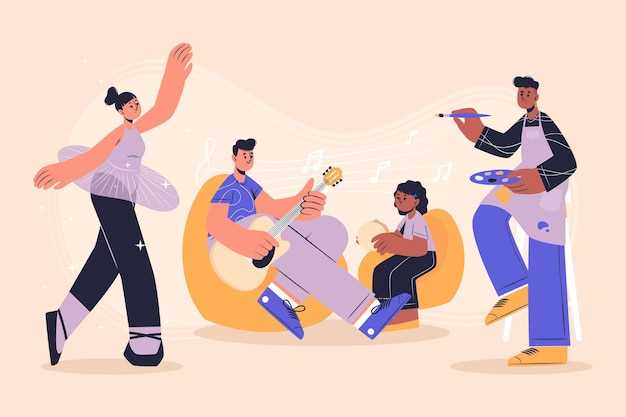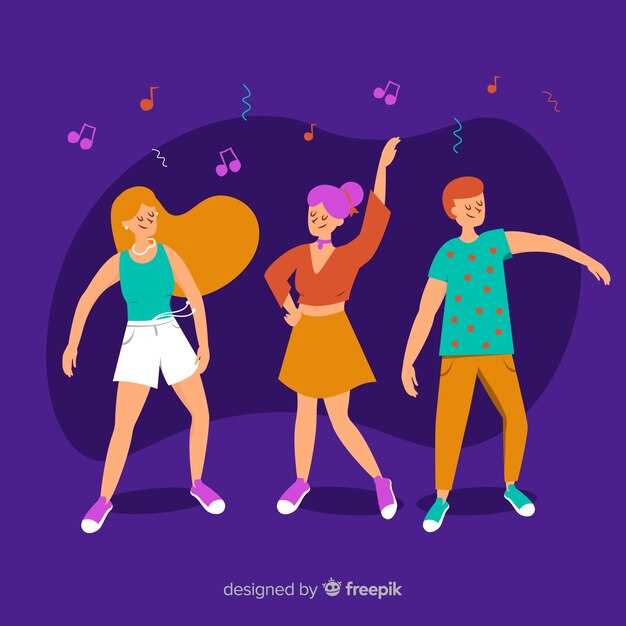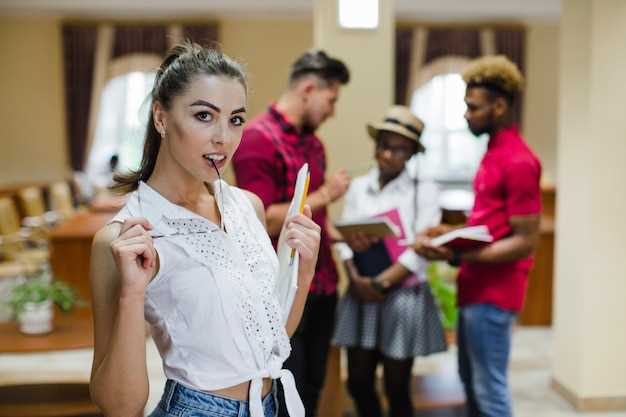When young people engage in activities that involve physical movement and coordination, they are able to develop important abilities that facilitate their interactions with others. Through the art of dance, individuals can cultivate a range of interpersonal skills that are crucial for navigating social relationships.
By participating in dance classes and performances, young individuals have the opportunity to hone their communication skills, build confidence, and foster a sense of community and belonging. Movement-based activities not only promote physical health and well-being, but also contribute to the emotional and social development of youth.
Exploring Dance as a Social Catalyst
Diving into the realm of movement and rhythm as a facilitator for social connections and communication, dance acts as a powerful tool in fostering bonds and building relationships among individuals. Through the shared experience of coordinated steps and gestures, dancers engage in a unique form of expression that transcends language barriers.
As individuals move in sync with others on the dance floor, they cultivate a sense of unity and cooperation, strengthening their interpersonal connections and cultivating a sense of camaraderie. The act of dancing together fosters a sense of belonging and mutual understanding, creating a platform for individuals to express themselves authentically and connect on a deeper level.
Additionally, dance serves as a medium for individuals to break down social barriers and overcome inhibitions, allowing them to step out of their comfort zones and engage with others in a meaningful way. Whether through structured choreography or freestyle movement, dance encourages spontaneity and creativity, fostering a sense of openness and vulnerability that promotes genuine interactions and fosters a sense of community.
The Impact of Dance on Youth Connections
Dance plays a significant role in fostering meaningful relationships among young individuals. Through the art of movement and expression, dancers are able to connect with one another on a deeper level, building trust, respect, and empathy. Dance serves as a universal language that transcends cultural boundaries, allowing youth to bond over a shared passion and creativity.
Engaging in dance activities helps youth develop crucial social skills such as communication, teamwork, and problem-solving. By collaborating with others in a dance setting, individuals learn to effectively communicate their ideas and emotions, work together towards a common goal, and overcome challenges as a cohesive group. These interactions not only strengthen friendships but also cultivate essential interpersonal skills that are beneficial in various aspects of life.
Fostering Friendships Through Movement

Building strong connections and nurturing relationships is essential for young individuals to thrive and grow. Through engaging in various physical activities, young people can develop bonds and create lasting friendships. Movement provides a unique platform for individuals to communicate, express themselves, and connect with others on a deeper level.
When young individuals come together to move and groove, they are able to break down barriers, build trust, and establish a sense of camaraderie. The shared experience of movement allows for mutual understanding and empathy, helping to foster genuine friendships that can withstand the test of time.
Whether dancing in a group setting or engaging in partner activities, the joy and excitement that come with moving together can create a sense of unity and belonging. Through movement, young people learn to cooperate, collaborate, and support one another, ultimately strengthening their social connections and enriching their lives.
Building Trust and Teamwork

Developing a sense of trust and fostering effective teamwork are crucial elements in enhancing communication and collaboration among individuals. In a group setting, individuals must rely on each other, communicate openly, and work together towards a common goal. Building trust involves creating a safe and supportive environment where individuals feel comfortable expressing themselves and sharing their thoughts and ideas. Teamwork, on the other hand, requires active participation, effective communication, and a willingness to collaborate with others.
- Establishing trust involves being honest and reliable, keeping promises, and showing respect towards others.
- Teamwork requires individuals to listen actively, communicate clearly, delegate tasks effectively, and contribute to the overall success of the team.
- Collaborating with peers enables individuals to gain new perspectives, learn from others, and leverage each other’s strengths to achieve a common objective.
By focusing on building trust and teamwork, individuals can strengthen their relationships, improve their social interactions, and enhance their overall communication skills. These are essential components in fostering a positive and supportive environment where individuals feel valued, respected, and understood.
Social Growth Through Creative Expression
Exploring one’s creativity can lead to immense personal development and growth in social settings. By tapping into one’s imaginative side, individuals can break free from conventional norms and express themselves in unique ways. This process not only fosters self-discovery, but also opens up opportunities for deeper connection with others.
Creative expression serves as a powerful tool for individuals to communicate their emotions, thoughts, and experiences with others. Through various art forms such as dance, music, and visual arts, individuals can convey complex feelings that might be difficult to express verbally. This non-verbal form of communication can bridge gaps between people and create a sense of unity and understanding.
Moreover, creative expression encourages individuals to step out of their comfort zones and embrace vulnerability. By sharing their artistry with others, individuals can build trust and authenticity in their relationships. This open and honest communication fosters a supportive environment where individuals can grow and thrive socially.
How Dance Cultivates Communication Skills
Dance serves as a powerful tool in fostering effective communication among individuals. Through movement and expression, dancers are able to convey emotions, thoughts, and ideas without the need for words. Dance encourages participants to connect with one another on a nonverbal level, promoting understanding and empathy.
- Improves Body Language: By engaging in dance, individuals learn to communicate through body language, gestures, and facial expressions. This heightened awareness of nonverbal cues helps in enhancing interpersonal interactions and improving overall communication skills.
- Enhances Listening Skills: Dance requires participants to listen to the rhythm, tempo, and cues from the music and their dance partners. This attentiveness translates into improved listening skills in everyday conversations, enabling individuals to better understand and respond to others.
- Promotes Collaboration: In group dance settings, individuals must coordinate their movements, synchronize their timing, and communicate effectively to create a harmonious performance. This collaborative effort promotes teamwork, cooperation, and mutual respect among participants.
- Encourages Creativity: Dance encourages individuals to express themselves creatively, fostering a sense of individuality and uniqueness. This creativity spills over into their verbal communication, allowing them to articulate their thoughts and ideas in innovative and engaging ways.
In conclusion, dance serves as a catalyst for developing strong communication skills by improving body language, enhancing listening skills, promoting collaboration, and encouraging creativity. By incorporating dance into their lives, individuals can cultivate a deeper understanding of themselves and others, leading to more meaningful and effective interactions in their personal and professional relationships.
Non-Verbal Expressions in Partner Dance

When engaging in partner dance, individuals have the opportunity to communicate and connect with one another through non-verbal expressions. These non-verbal cues can convey a variety of emotions, intentions, and feelings without the need for verbal communication.
Body language plays a crucial role in partner dance, as partners must synchronize their movements and respond to each other’s cues through physical touch and proximity. By paying attention to their partner’s body language, dancers can anticipate and respond to their partner’s movements in a harmonious and fluid manner.
Facial expressions also play a significant role in partner dance, as they can convey emotions such as joy, excitement, concentration, and engagement. Partners use their facial expressions to communicate with one another and enhance their connection on the dance floor.
Video:
Boss Baby Brody Full Performance & Intro | America’s Got Talent 2024 Auditions Week 5 S19E05

Boss Baby Brody Full Performance & Intro | America’s Got Talent 2024 Auditions Week 5 S19E05 by TALENTKINGHD 48,715 views 3 weeks ago 4 minutes, 15 seconds
Q&A:
How can dance enhance youth interactions?
Dance can enhance youth interactions by promoting teamwork, communication, and cooperation. Through dancing, young people learn to coordinate their movements with others, build trust, and improve their social skills.
What specific social skills can youth develop through dance?
Youth can develop a range of social skills through dance, including empathy, active listening, leadership, and conflict resolution. By participating in dance activities, young people learn to understand and connect with others on a deeper level.
Can dance help shy or introverted youth come out of their shells?
Yes, dance can help shy or introverted youth come out of their shells by providing a nonverbal form of expression and a safe space to interact with peers. Through dance, young people can build confidence, improve self-esteem, and overcome social anxiety.
How can parents support their children in developing social skills through dance?
Parents can support their children in developing social skills through dance by encouraging them to participate in dance classes, performances, and group activities. They can also attend recitals, provide positive reinforcement, and help their children practice at home.
Are there any studies that show the benefits of dance for youth interactions?
Yes, there have been several studies that show the benefits of dance for youth interactions. Research has found that dance can improve social skills, emotional intelligence, and mental health in young people. These studies highlight the positive impact of dance on youth development and well-being.
How can dance enhance youth interactions?
Dance can enhance youth interactions by promoting teamwork, communication, and self-expression. Through dance, young people learn to cooperate with others, express their emotions, and communicate non-verbally, leading to improved social skills and relationships.
What are some specific social skills that can be developed through dance?
Through dance, youth can develop skills such as empathy, active listening, cooperation, and emotional intelligence. By working together on choreography, communicating through movement, and supporting each other during performances, young people learn valuable social skills that they can apply in various aspects of their lives.